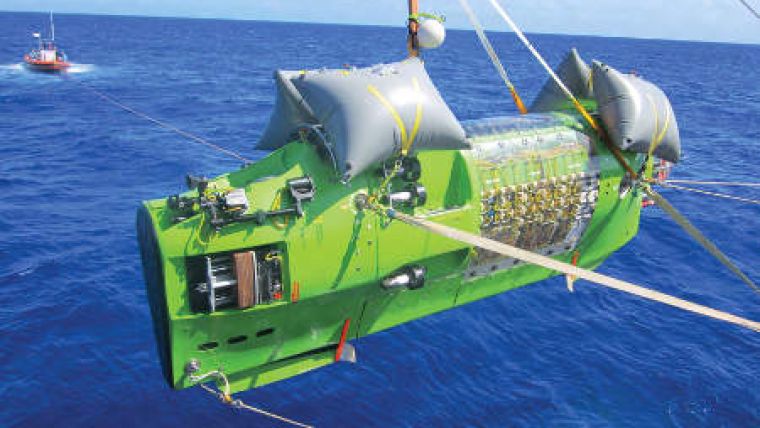Deepsea Challenger at WHOI
Following a cross-country journey with stops at science institutions, museums and even Capitol Hill, filmmaker and explorer James Cameron recently handed over the Deepsea Challenger, the only human-occupied vehicle currently able to reach the very deepest parts of the ocean, to Woods Hole Oceanographic Institution (WHOI, USA). There, the submersible system will be put to good use as a scientific platform for future deep-sea missions.
Enabling James Cameron to make his nearly 11-kilometre descent to the deepest place on earth, exploring the ocean floor, conducting experiments, collecting samples, and returning safely to the surface, requires an underwater vehicle unlike any other. As with spaceships, deep-sea submersibles must be engineered to accommodate innumerable challenges, including extreme changes in pressure, temperature and the incessant absence of sunlight.
It took James Cameron and his team seven years to complete the Deepsea Challenger, and the challenges related to this process spanned the incorporation of several new technologies, designs and materials – along with extensive testing. From its unique vertical attitude to its purpose developed materials, including a highly sophisticated syntactic foam developed specifically to withstand the immense pressure at the very bottom of the ocean, the vehicle represents a significant showcase of engineering innovation.
Standard connectors
Almost everything on the Deepsea Challenger is custom designed and tailor-made for its specific purpose, as the vehicle can rely on engineered systems and components, designed to function under enormous strain. Amongst these, however, the many stainless steel PBOF and bulkhead SubConn connectors, supplied by Ocean Innovations, mark an exception to prove the rule. Tested explicitly to work at the extremists of depths, these industry standard connectors are used to interface the vehicle battery packs, the spot and LED panel lighting arrays, HD and IMAX quality 3D cameras, along with and other vital instruments and sensors used on the Deepsea Challenger. In addition, SubConn connectors, including glass sphere modified units, were widely used to interface the two unmanned robotic landers that descended to perform pre-programmed tasks in the abyss - prior to the arrival of the Deepsea Challenger.
Image: Launching the Deepsea Challenger. Image courtesy: James Cameron.














